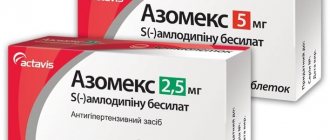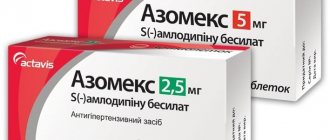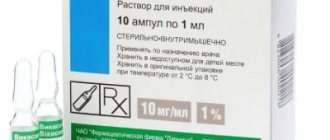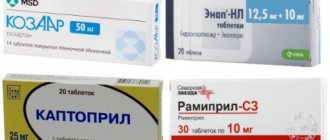Indications for use
The main active ingredient of Ketanova is ketorolac, which has a therapeutic effect. Experts do not recommend the drug for monotherapy. The medication is suitable for eliminating the symptoms of pathological conditions.
The main indications are related to pain:
- after surgery;
- after joint injuries;
- toothache and headache of a neurological nature;
- for oncological diseases;
- for osteochondrosis and osteoarthrosis;
- during gynecological diseases;
- during menstruation;
- for ENT pathologies.
"Ketanov" - a potent pain reliever
"Ketanov" produces an analgesic effect, so it is often prescribed after taking drugs belonging to the group of narcotic medications. Thus, adaptation during the period of withdrawal from narcotic drugs is easier.
Contraindications
Taking the medication may be contraindicated in pathological conditions in the patient, when the composition of the medication increases the risk of complications.
A specialist should not prescribe Ketanov for high blood pressure. If a patient is diagnosed with hypertension, taking the drug can lead to the formation of blood clots, tachycardia, cerebral hemorrhage and other disorders, which can result in death.
Contraindications indicated in the annotation:
- asthma (aspirin or bronchial);
- allergy to any component of the composition;
- bronchospasms;
- liver and kidney pathologies;
- blood clotting disorder;
- blood diseases;
- pathologies of the cardiovascular system;
- the presence of polyps in the nasopharynx;
- strokes;
In some cases, it is not recommended to use the drug Ketanov; contraindications include the following diseases and conditions of the patient: pregnancy and breastfeeding
- complex forms of gastrointestinal diseases;
- dehydration;
- previous blood loss;
- breastfeeding;
- age under 14 and after 65 years;
- pregnancy period.
Most contraindications are related to the circulatory system and heart function, so it is not recommended to ignore the instructions.
Adverse reaction
When using Ketanov there is a risk of side effects. Negative reactions can have varying degrees of manifestation.
In rare cases, patients experience:
- neurological abnormalities (drowsiness, overexcitability, nightmares, neuroses, muscle spasms);
- problems with the digestive system (nausea, diarrhea, pain in the abdomen);
- hyperhidrosis;
- poor blood clotting;
- muscle pain;
- tachycardia.
Allergic manifestations occur rarely in the form of anaphylactic reactions, including symptoms: skin rash and discoloration, urticaria
A side effect in most cases is a consequence of the presence of contraindications or a violation of the drug dosage regimen.
Ketanov 10 mg 100 pcs. film-coated tablets
pharmachologic effect
NSAID, derivative of pyrrolysine-carboxylic acid. It has a pronounced analgesic effect, and also has anti-inflammatory and moderate antipyretic effects. The mechanism of action is associated with inhibition of the activity of COX, the main enzyme in the metabolism of arachidonic acid, which is a precursor of prostaglandins, which play a major role in the pathogenesis of inflammation, pain and fever.
Composition and release form Ketanov 10 mg 100 pcs. film-coated tablets
Tablets - 1 tablet: ketorolac tromethamine 10 mg.
10 pieces. — contour cell packaging (10) — cardboard packs.
Description of the dosage form
Film-coated tablets.
Directions for use and doses
For adults, when taken orally - 10 mg every 4-6 hours, if necessary - 20 mg 3-4 times a day.
For intramuscular administration, a single dose is 10-30 mg, the interval between injections is 4-6 hours. The maximum duration of use is 2 days.
Maximum doses: when taken orally or intramuscularly - 90 mg/day; for patients weighing up to 50 kg, with impaired renal function, as well as for persons over 65 years of age - 60 mg/day.
Pharmacodynamics
The analgesic effect occurs after approximately 30 minutes, the maximum analgesic effect develops after 1-2 hours. The duration of the analgesic effect is 4-6 hours or more, depending on the dose. Does not have a sedative or anxiolytic effect, does not affect opioid receptors. It does not have a depressant effect on the respiratory center and does not enhance respiratory depression and sedation caused by opioid analgesics. Does not cause drug dependence. No withdrawal symptoms occur after abrupt cessation of use. Suppresses platelet aggregation and may cause prolongation of bleeding time. Restoration of platelet function occurs 24-48 hours after discontinuation of the drug.
Pharmacokinetics
When taken orally, it is absorbed from the gastrointestinal tract. Cmax in blood plasma is achieved 40-50 minutes after both oral and intramuscular administration. Eating does not affect absorption. Plasma protein binding is more than 99%.
T1/2 - 4-6 hours both after oral administration and after intramuscular administration.
More than 90% of the dose is excreted in the urine, unchanged - 60%; the remaining amount is through the intestines.
In patients with impaired renal function and the elderly, the elimination rate decreases, T1/2 increases.
Indications for use Ketanov 10 mg 100 pcs. film-coated tablets
For short-term relief of moderate and severe pain of various origins.
Contraindications
Erosive and ulcerative lesions of the gastrointestinal tract in the acute phase, the presence or suspicion of gastrointestinal bleeding and/or cerebral hemorrhage, a history of blood coagulation disorders, conditions with a high risk of bleeding or incomplete hemostasis, hemorrhagic diathesis, moderate and severe renal dysfunction ( serum creatinine content more than 50 mg/l), the risk of developing renal failure due to hypovolemia and dehydration; “aspirin triad”, bronchial asthma, nasal polyps, history of angioedema, preventive pain relief before and during surgery, childhood and adolescence up to 16 years of age, pregnancy, childbirth, lactation, hypersensitivity to ketorolac, acetylsalicylic acid and other NSAIDs .
Application of Ketanov 10 mg 100 pcs. film-coated tablets during pregnancy and breastfeeding
Contraindicated during pregnancy, during childbirth and during lactation (breastfeeding).
Ketorolac is contraindicated for use as a premedication, maintenance of anesthesia and for pain relief in obstetric practice, since its influence may increase the duration of the first stage of labor. In addition, ketorolac may inhibit uterine contractility and fetal circulation.
Use with caution in patients with impaired renal function.
Use in children
Contraindicated in children and adolescents under 16 years of age.
special instructions
Use with caution in patients with impaired liver and kidney function, chronic heart failure, arterial hypertension, in patients with erosive and ulcerative lesions of the gastrointestinal tract and a history of bleeding from the gastrointestinal tract.
Ketorolac should be used with caution in the postoperative period in cases where particularly careful hemostasis is required (including after resection of the prostate gland, tonsillectomy, in cosmetic surgery), as well as in elderly patients, because The half-life of ketorolac is prolonged and plasma clearance may be reduced. In this category of patients, it is recommended to use ketorolac in doses close to the lower limit of the therapeutic range. If symptoms of liver damage, skin rash, or eosinophilia appear, ketorolac should be discontinued. Ketorolac is not indicated for use in chronic pain syndrome.
Impact on the ability to drive vehicles and operate machinery
If drowsiness, dizziness, insomnia or depression appear during treatment with ketorolac, special care must be taken when engaging in potentially hazardous activities that require increased attention and speed of psychomotor reactions.
Overdose
Symptoms: (with a single dose) abdominal pain, nausea, vomiting, peptic ulcers, impaired renal function (these symptoms disappeared after discontinuation of the drug). Treatment: symptomatic therapy. Dialysis does not significantly remove ketorolac from the blood.
Side effects of Ketanov 10 mg 100 pcs. film-coated tablets
From the cardiovascular system: rarely - bradycardia, changes in blood pressure, palpitations, fainting.
From the digestive system: possible nausea, abdominal pain, diarrhea; rarely - constipation, flatulence, feeling of gastrointestinal fullness, vomiting, dry mouth, thirst, stomatitis, gastritis, erosive and ulcerative lesions of the gastrointestinal tract, liver dysfunction.
From the central nervous system and peripheral nervous system: anxiety, headache, drowsiness are possible; rarely - paresthesia, depression, euphoria, sleep disturbances, dizziness, changes in taste, visual disturbances, motor disorders.
From the respiratory system: rarely - respiratory failure, attacks of suffocation.
From the urinary system: rarely - increased frequency of urination, oliguria, polyuria, proteinuria, hematuria, azotemia, acute renal failure.
From the blood coagulation system: rarely - nosebleeds, anemia, eosinophilia, thrombocytopenia, bleeding from postoperative wounds.
Metabolism: possible increased sweating, swelling; rarely - oliguria, increased levels of creatinine and/or urea in the blood plasma, hypokalemia, hyponatremia.
Allergic reactions: possible skin itching, hemorrhagic rash; in isolated cases - exfoliative dermatitis, urticaria, Lyell's syndrome, Stevens-Johnson syndrome, anaphylactic shock, bronchospasm, Quincke's edema, myalgia.
Other: possible fever.
Local reactions: pain at the injection site.
Drug interactions
When ketorolac is used concomitantly with other NSAIDs, additive side effects may develop; with pentoxifylline, anticoagulants (including heparin in low doses) - the risk of bleeding may increase; with ACE inhibitors - there may be an increased risk of developing renal dysfunction; with probenecid - the plasma concentration of ketorolac and its half-life increase; with lithium preparations - a decrease in the renal clearance of lithium and an increase in its concentration in plasma is possible; with furosemide - reducing its diuretic effect.
When using ketorolac, the need for the use of opioid analgesics for pain relief is reduced.
Application and dosage
"Ketanov" is available in two forms: tablets and ampoule solution. Depending on the indications, the specialist may prescribe a tablet form of the medication or injections. The effect of the medicinal composition lasts from several hours to two days.
Pills
Taking tablets is recommended during or after meals. To eliminate severe pain, it is recommended to take the medicine three times a day with an interval of at least 4 hours. The maximum daily dose is 40 mg.
The drug is often recommended for one-time use. A course of treatment is prescribed in rare cases. With continued use, the risk of side effects increases.
Solution
The solution is administered intramuscularly, and the analgesic effect is achieved much faster due to the direct entry of the drug into the blood. However, injections are not recommended for continuous use due to the negative effects on the body.
No more than 30 mg of solution is administered per procedure. If painful sensations persist or recur, a second injection is given no earlier than after 4 hours.
Combined method
It is possible to use a combined method of administration, which consists of taking Ketanov together with Metatrixate or Paracetamol. The maximum dosage of the active substance with this method should be no more than 90 mg per day.
It is undesirable to combine tablets and a solution of Ketanov or drugs containing dioctahedral smectite. The consequences may be internal bleeding in the gastrointestinal tract, the development of stomach ulcers, or impaired renal/liver function.




